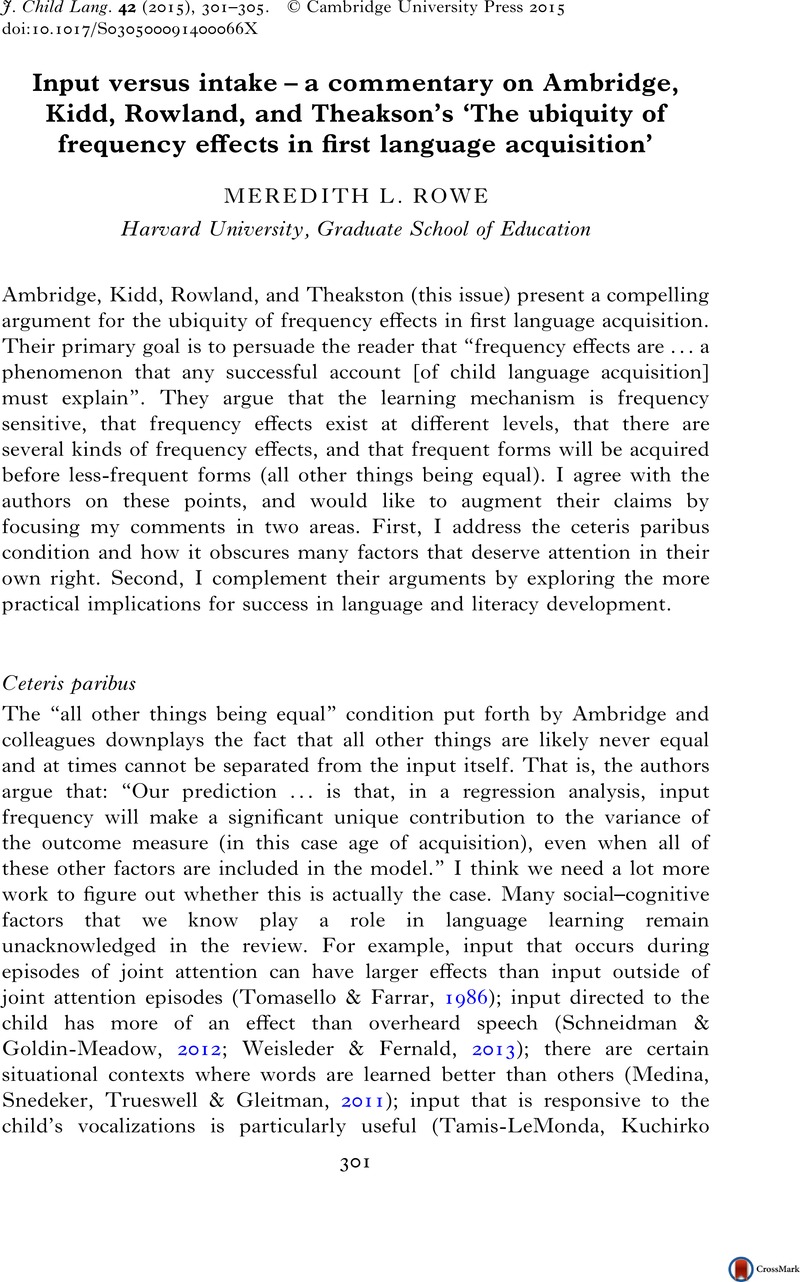Crossref Citations
This article has been cited by the following publications. This list is generated based on data provided by Crossref.
NEWMAN, ROCHELLE S.
ROWE, MEREDITH L.
and
BERNSTEIN RATNER, NAN
2016.
Input and uptake at 7 months predicts toddler vocabulary: the role of child-directed speech and infant processing skills in language development.
Journal of Child Language,
Vol. 43,
Issue. 5,
p.
1158.
Cartmill, Erica A.
2016.
Mind the Gap.
Policy Insights from the Behavioral and Brain Sciences,
Vol. 3,
Issue. 2,
p.
185.
Kjærbæk, Laila
and
Basbøll, Hans
2016.
Interaction between input frequency, transparency and productivity in acquisition of noun plural inflection in Danish.
Poznan Studies in Contemporary Linguistics,
Vol. 52,
Issue. 4,
Rowe, Meredith L.
Leech, Kathryn A.
and
Cabrera, Natasha
2017.
Going Beyond Input Quantity: Wh‐Questions Matter for Toddlers' Language and Cognitive Development.
Cognitive Science,
Vol. 41,
Issue. S1,
p.
162.
Leonard, Laurence B.
and
Deevy, Patricia
2017.
The Changing View of Input in the Treatment of Children With Grammatical Deficits.
American Journal of Speech-Language Pathology,
Vol. 26,
Issue. 3,
p.
1030.
Leonard, Laurence B.
2019.
Reciprocal relations between syntax and tense/agreement morphology in children’s interpretation of input: A look at children with specific language impairment.
First Language,
Vol. 39,
Issue. 1,
p.
96.
Leonard, Laurence B.
Christ, Sharon L.
Deevy, Patricia
Karpicke, Jeffrey D.
Weber, Christine
Haebig, Eileen
Kueser, Justin B.
Souto, Sofía
and
Krok, Windi
2021.
A multi-study examination of the role of repeated spaced retrieval in the word learning of children with developmental language disorder.
Journal of Neurodevelopmental Disorders,
Vol. 13,
Issue. 1,
Möwisch, Dave
Konrad-Ristau, Kira
and
Weinert, Sabine
2023.
RETRACTED ARTICLE: Cognitively stimulating maternal language as predictor for vocabulary growth.
Zeitschrift für Erziehungswissenschaft,
Vol. 26,
Issue. 2,
p.
319.
Epstein, Baila
and
Marton, Klara
2025.
A person-centered approach to examining effects on the interaction between cognitive control & language development.
Developmental Review,
Vol. 75,
Issue. ,
p.
101185.



